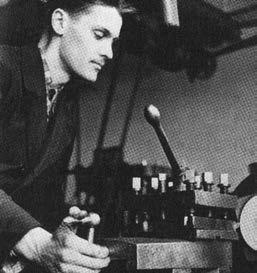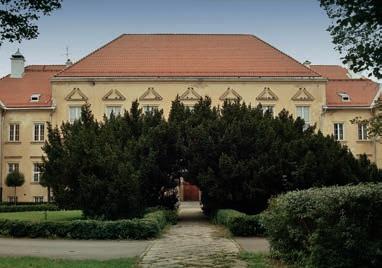
1 minute read
A Life In Dates
1921

Jan Bytnar is born on May 6th in the small south-eastern town of Kolbuszowa. The son of a headmaster and teacher, in 1926 the family move to just outside Warsaw after his father, Stanisław, receives an offer to take up higher studies in the capital.

1930
Though living in the satellite town of Piastów, an offer to attend a prestigious elementary school in Powiśle is too good to refuse. Travelling in each day, Bytnar joins school No. 29 at Zagórna 3. Years later, he resumes his ties with the school by leading a scout group here whilst also running a day room for under-privileged children.
1941
Already active in the underground, Bytnar has already demonstrated commitment to the Polish cause after delivering secret messages in and out of Pawiak prison. In March, he joins the Gray Ranks and by summer is commanding his own unit in the Ochota district.
1942
Leading by action, Bytnar’s escapades include tearing a swastika flag from the Zącheta Gallery (then home to a House of German Culture). In the same year, he constructs an elaborate fold-up pen that allows him to write messages from a distance of four-meters. This comes in handy when he defaces the Aviator Monument on Pl. Unii Lubelskiej (now reconstructed and found at the intersection of Wawelska and Żwirki I Wigury) by painting the Kotwica (the anchor-like symbol of ‘Fighting Poland’) on the plinth.
1931
High grades at school No. 29 earn Bytnar a place at the acclaimed Stefan Batory high school at Myśliwiecka 6. To this day, the school’s reputation precedes itself having attracted visits from such luminaries as Queen Elizabeth II and Michael Jackson. Coinciding with Bytnar’s enrollment in this school, his family move to Mokotów, taking apartment No. 63 at Niepodległości 159.
1934
Bytnar takes the scouting oath and rapidly rises up the ranks – by 1938 he has obtained the highest rank possible.
1937
At school, Bytnar shares a desk with Aleksy Dawidowski, another scout that will later become a war hero – in 1942, Dawidowski becomes the talk of the underground after replacing a German plaque hanging off Warsaw’s Copernicus moment. One year later, he will die during the attempt to free his former classmate.


1943
On New Year’s Eve, Bytnar takes part in an action to blow some train lines near Kraśnik. More than anything, it is a test to check the combat readiness of the Gray Ranks – Bytnar passes with flying colors and on January 18th he shoots a German official on Emili Plater. On February 2nd, during an operation to rescue documents from a flat on Bracka 23, he is wounded in the thigh and recuperates at Koszykowa 75. On March 23rd, he is arrested along with his father during a dawn raid on the family home at Niepodległości.








